Abstract
A reduced nicotinamide adenine dinucleotide phosphate (NADPH)-dependent reductase with the ability to reduce diacetyl has been isolated from Escherichia coli and has been purified 800-fold to near homogeneity. The product of the reduction of diacetyl was shown to be acetoin. The enzyme proved to catalyze the oxidation of NADPH in the presence of both uncharged α- and β-dicarbonyl compounds. Even monocarbonyl compounds showed slight activity with the enzyme. On the basis of its substrate specificity, it is suggested that the enzyme functions as a diacetyl reductase. In contrast to other diacetyl reductases, the one reported here is specific for NADPH and does not possess acetoin reductase activity. The pH optimum of this enzyme was found to be between 6 and 7. The maximal velocity for the NADPH-dependent reduction of diacetyl was determined to be 9.5 μmol per min per mg of protein and the Km values for diacetyl and NADPH were found to be 4.44 mM and 0.02 mM, respectively. The molecular weight was estimated by gel filtration on Sephadex G-100 to be approximately 10,000.
Full text
PDF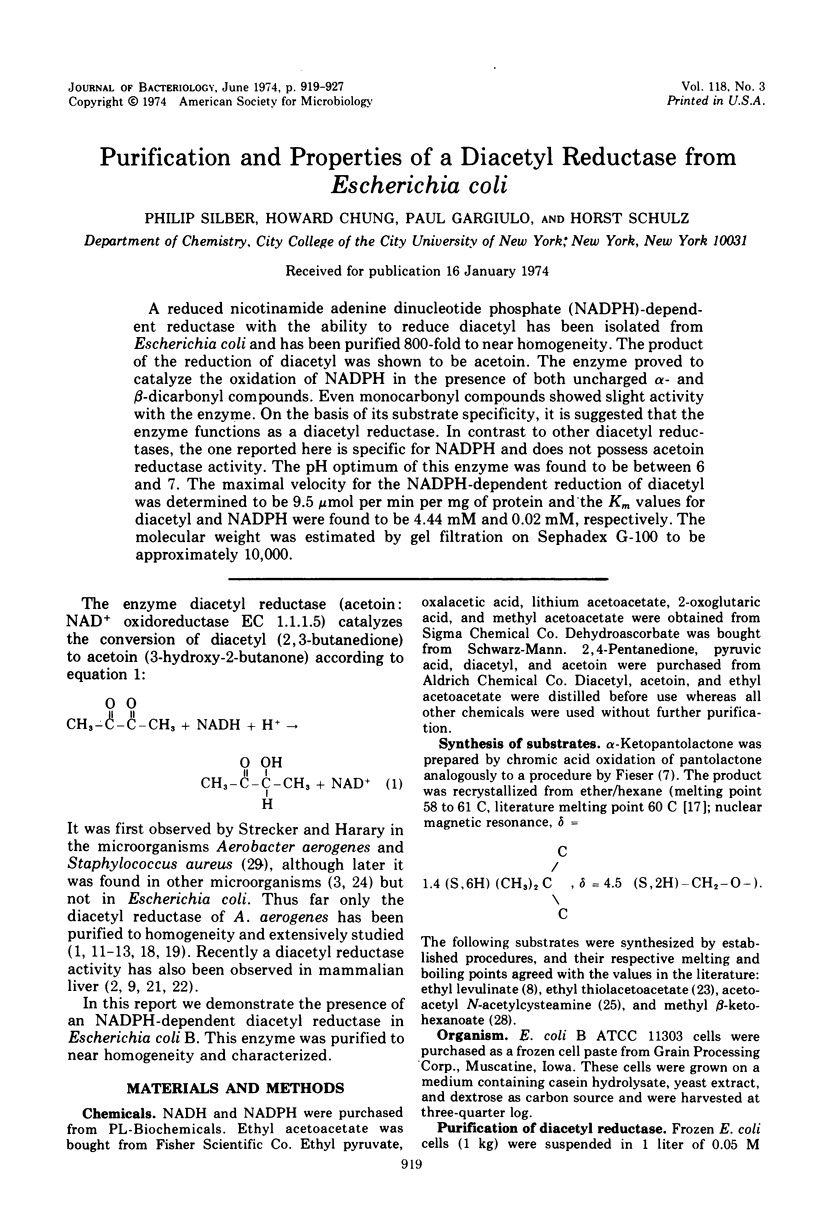
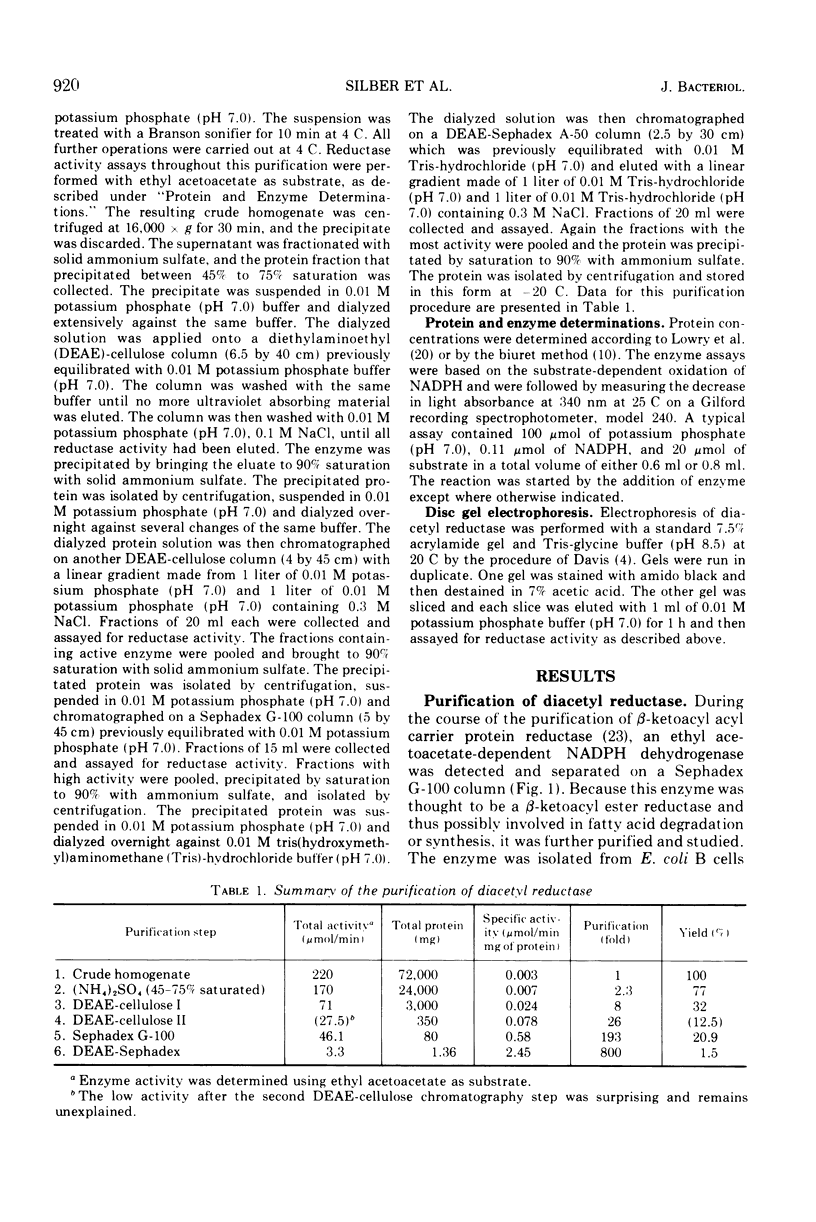
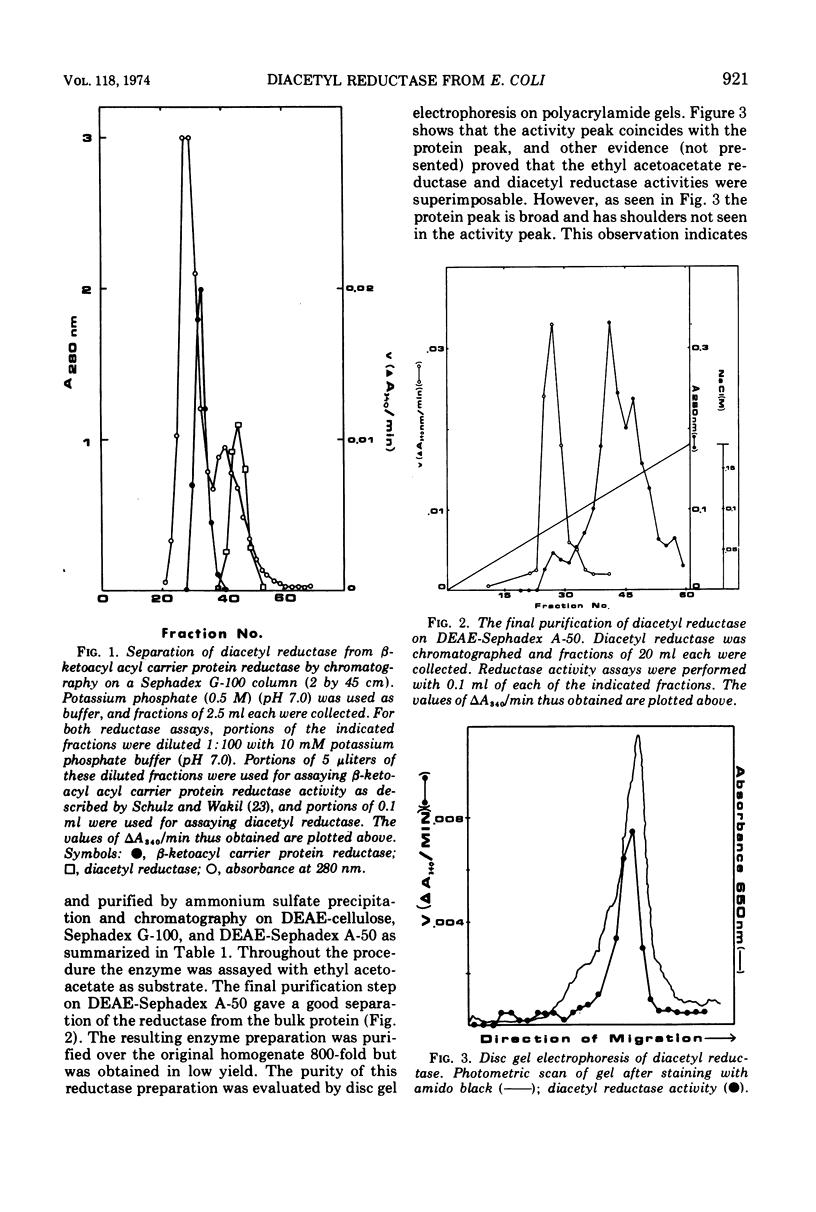
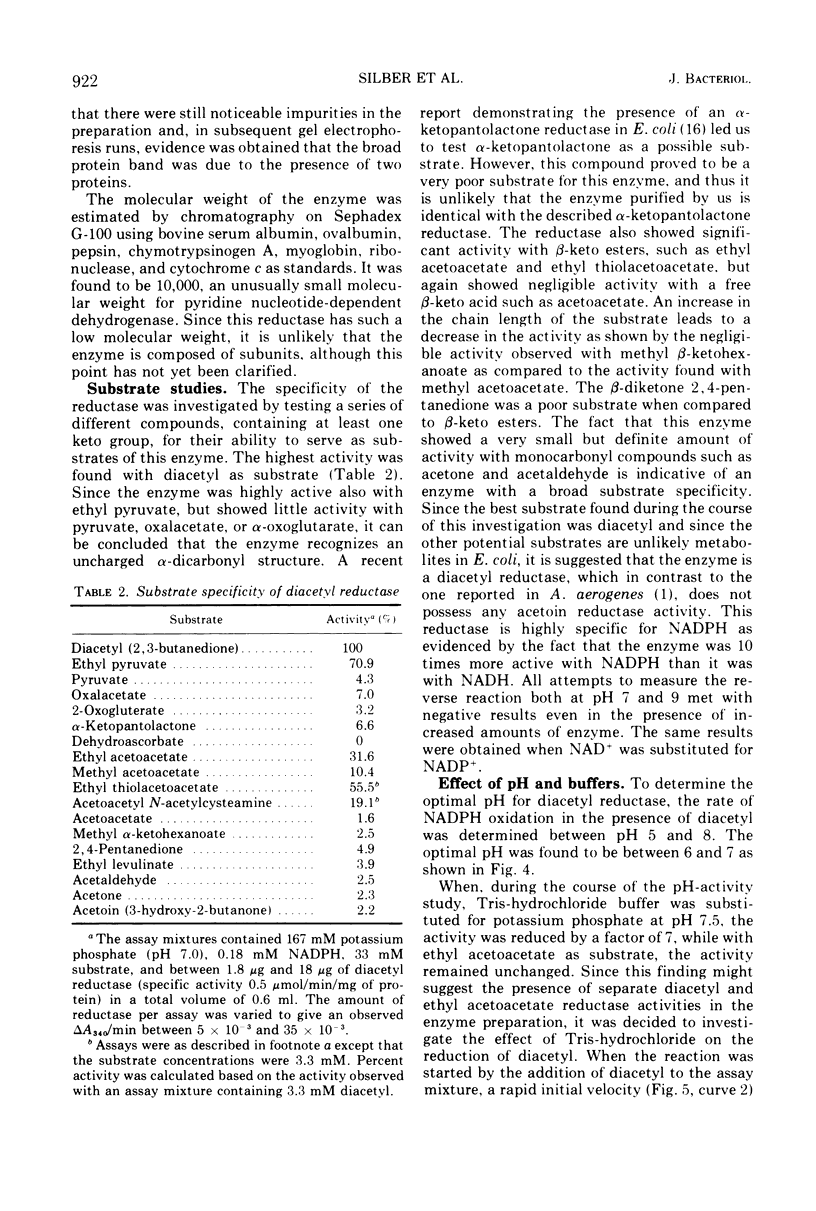
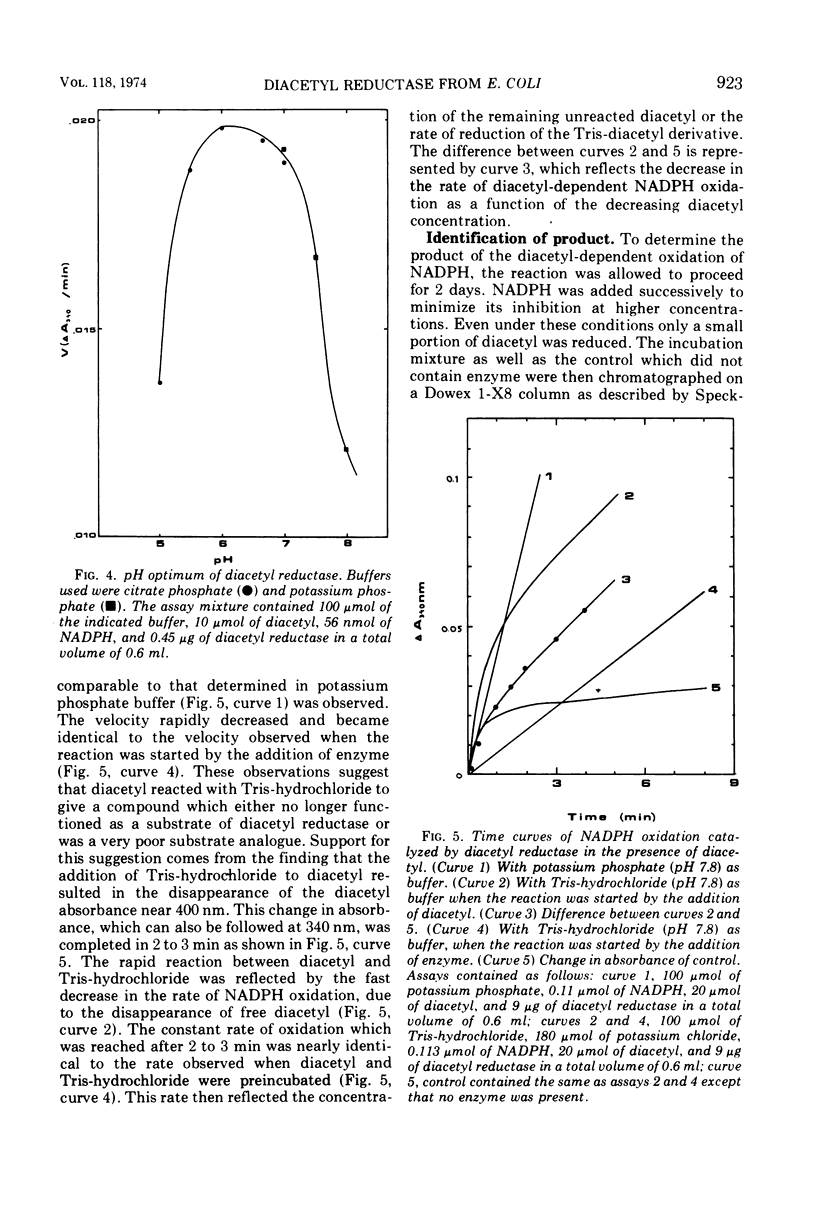
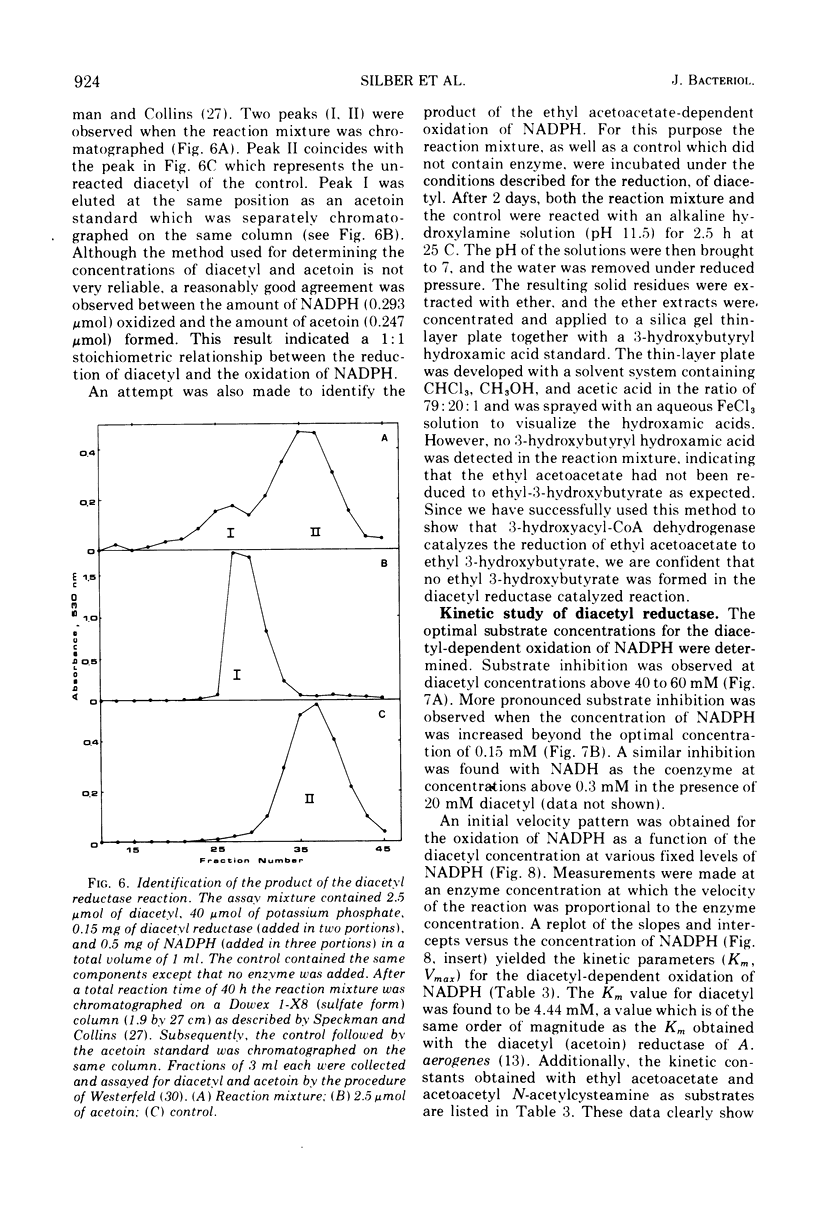
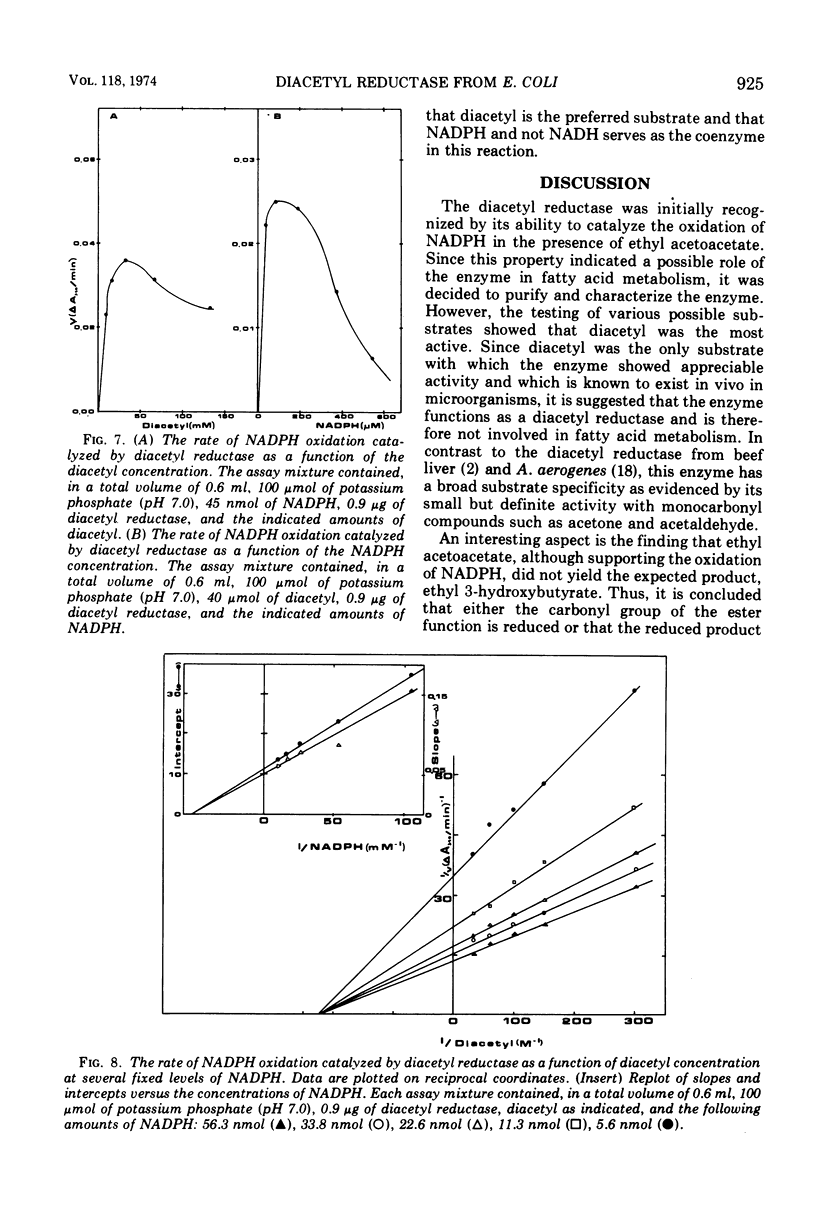
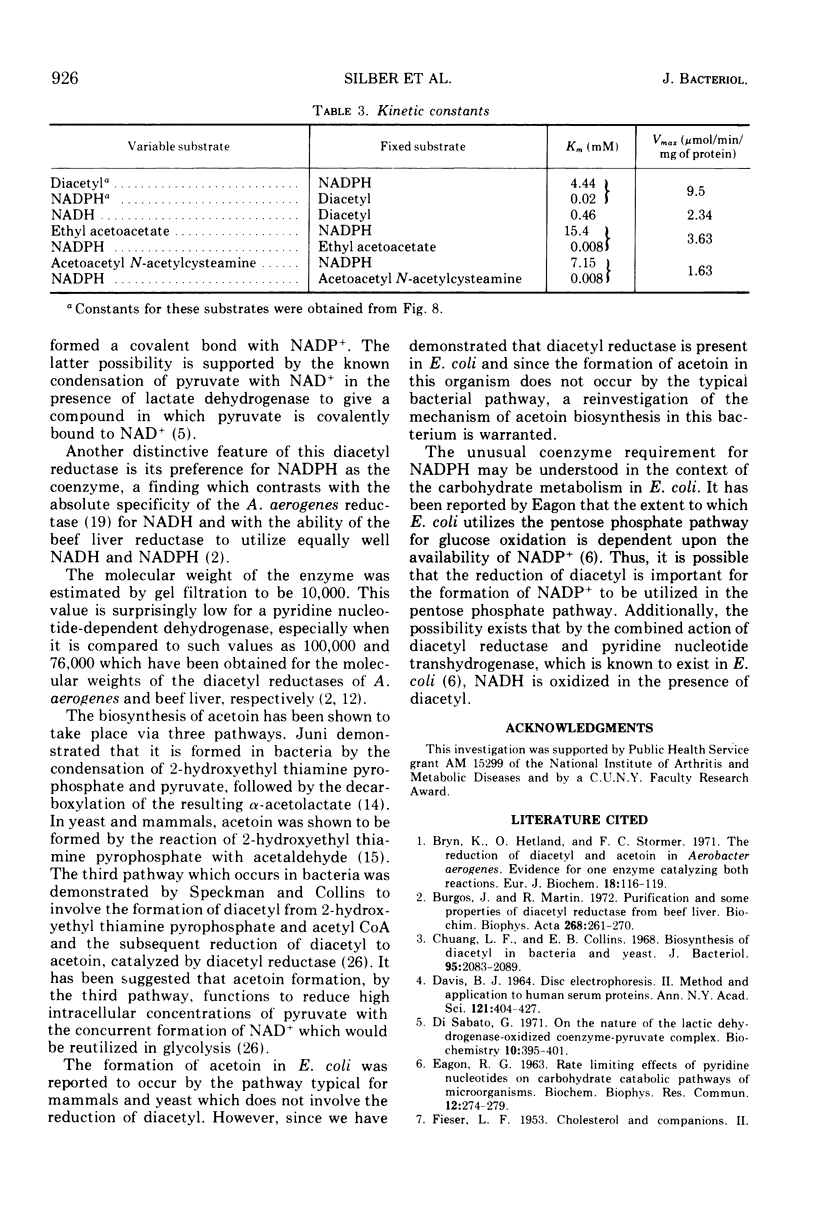
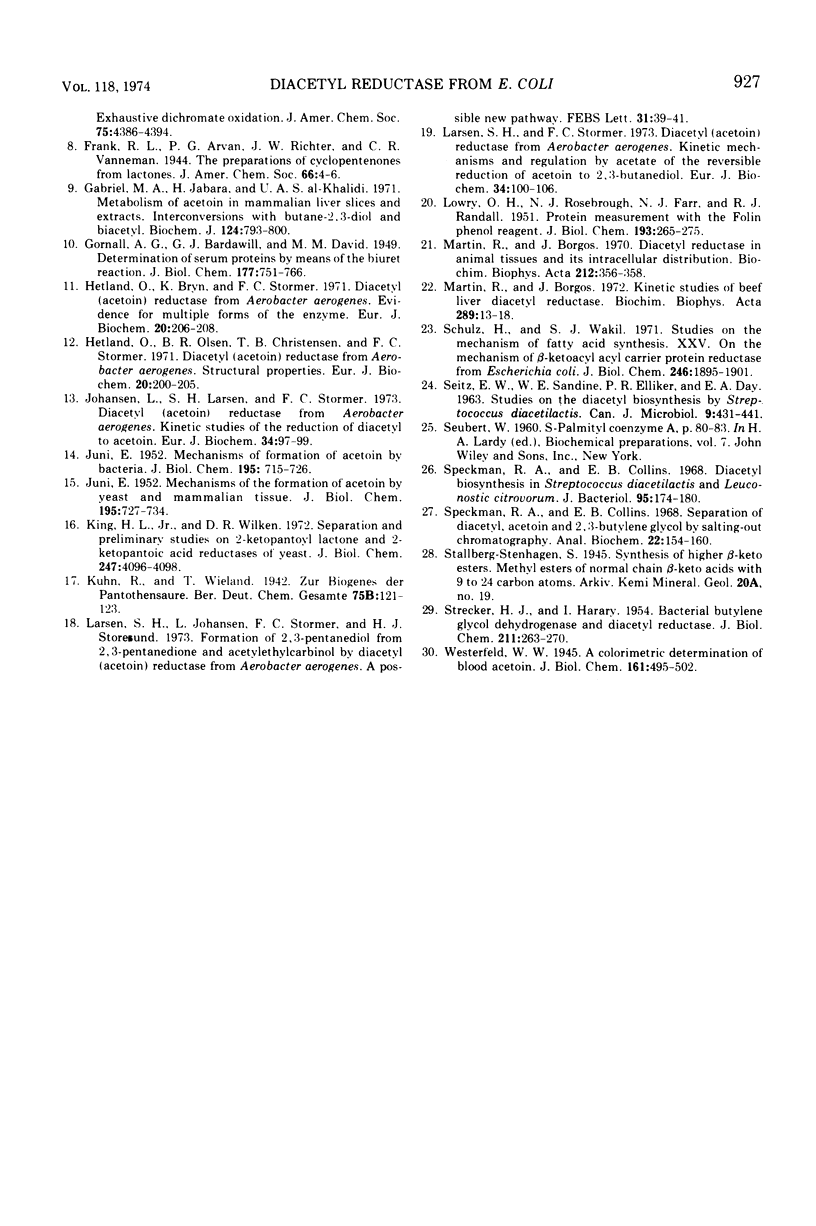
Selected References
These references are in PubMed. This may not be the complete list of references from this article.
- Bryn K., Hetland O., Stormer F. C. The reduction of diacetyl and acetoin in Aerobacter aerogenes. Evidence for one enzyme catalyzing both reactions. Eur J Biochem. 1971 Jan 1;18(1):116–119. doi: 10.1111/j.1432-1033.1971.tb01221.x. [DOI] [PubMed] [Google Scholar]
- Burgos J., Martín R. Purification and some properties of diacetyl reductase from beef liver. Biochim Biophys Acta. 1972 May 12;268(2):261–270. doi: 10.1016/0005-2744(72)90321-x. [DOI] [PubMed] [Google Scholar]
- Chuang L. F., Collins E. B. Biosynthesis of diacetyl in bacteria and yeast. J Bacteriol. 1968 Jun;95(6):2083–2089. doi: 10.1128/jb.95.6.2083-2089.1968. [DOI] [PMC free article] [PubMed] [Google Scholar]
- DAVIS B. J. DISC ELECTROPHORESIS. II. METHOD AND APPLICATION TO HUMAN SERUM PROTEINS. Ann N Y Acad Sci. 1964 Dec 28;121:404–427. doi: 10.1111/j.1749-6632.1964.tb14213.x. [DOI] [PubMed] [Google Scholar]
- DAY H. S. Planning and equipping a disease diagnostic control laboratory. Lab Anim Care. 1963 Jun;2:431–441. [PubMed] [Google Scholar]
- Di Sabato G. On the nature of the lactic dehydrogenase-oxidized coenzyme-pyruvate complex. Biochemistry. 1971 Feb 2;10(3):395–401. doi: 10.1021/bi00779a006. [DOI] [PubMed] [Google Scholar]
- EAGON R. G. RATE LIMITING EFFECTS OF PYRIDINE NUCLEOTIDES ON CARBOHYDRATE CATABOLIC PATHWAYS OF MICROORGANISMS. Biochem Biophys Res Commun. 1963 Aug 1;12:274–279. doi: 10.1016/0006-291x(63)90295-x. [DOI] [PubMed] [Google Scholar]
- Gabriel M. A., Jabara H., al-Khalidi U. A. Metabolism of acetoin in mammalian liver slices and extracts. Interconversion with butane-2,3-diol and biacetyl. Biochem J. 1971 Oct;124(4):793–800. doi: 10.1042/bj1240793. [DOI] [PMC free article] [PubMed] [Google Scholar]
- Hetland O., Bryn K., Stormer F. C. Diacetyl (Acetoin) reductase from Aerobacter aerogenes. Evidence for multiple forms of the enzyme. Eur J Biochem. 1971 May 28;20(2):206–208. doi: 10.1111/j.1432-1033.1971.tb01380.x. [DOI] [PubMed] [Google Scholar]
- Hetland O., Olsen B. R., Christensen T. B., Stormer F. C. Diacetyl (acetoin) reductase from Aerobacter aerogenes. Structural properties. Eur J Biochem. 1971 May 28;20(2):200–205. doi: 10.1111/j.1432-1033.1971.tb01379.x. [DOI] [PubMed] [Google Scholar]
- JUNI E. Mechanisms of formation of acetoin by bacteria. J Biol Chem. 1952 Apr;195(2):715–726. [PubMed] [Google Scholar]
- JUNI E. Mechanisms of the formation of acetoin by yeast and mammalian tissue. J Biol Chem. 1952 Apr;195(2):727–734. [PubMed] [Google Scholar]
- Johansen L., Larsen S. H., Stormer F. C. Diacetyl (acetoin) reductase from Aerobacter aerogenes. Kinetic studies of the reduction of diacetyl to acetoin. Eur J Biochem. 1973 Apr 2;34(1):97–99. doi: 10.1111/j.1432-1033.1973.tb02733.x. [DOI] [PubMed] [Google Scholar]
- LOWRY O. H., ROSEBROUGH N. J., FARR A. L., RANDALL R. J. Protein measurement with the Folin phenol reagent. J Biol Chem. 1951 Nov;193(1):265–275. [PubMed] [Google Scholar]
- Larsen S. H., Johansen L., Stormer F. C., Storesund H. J. Formation of 2,3-pentanediol from 2,3-pentanedione and acetylethylcarbinol by diacetyl(acetoin)reductase from Aerobacter aerogenes. A possible new pathway. FEBS Lett. 1973 Apr 1;31(1):39–41. doi: 10.1016/0014-5793(73)80069-9. [DOI] [PubMed] [Google Scholar]
- Larsen S. H., Stormer F. C. Diacetyl (acetoin) reductase from Aerobacter aerogenes. Kinetic mechanism and regulation by acetate of the reversible reduction of acetoin to 2,3-butanediol. Eur J Biochem. 1973 Apr 2;34(1):100–106. doi: 10.1111/j.1432-1033.1973.tb02734.x. [DOI] [PubMed] [Google Scholar]
- Martin R., Burgos J. Diacetyl reductase in animal tissues and its intracellular distribution. Biochim Biophys Acta. 1970 Aug 15;212(2):356–358. doi: 10.1016/0005-2744(70)90217-2. [DOI] [PubMed] [Google Scholar]
- Martín R., Burgos J. Kinetic studies of beef liver diacetyl reductase. Biochim Biophys Acta. 1972 Nov 10;289(1):13–18. doi: 10.1016/0005-2744(72)90102-7. [DOI] [PubMed] [Google Scholar]
- STRECKER H. J., HARARY I. Bacterial butylene glycol dehydrogenase and diacetyl reductase. J Biol Chem. 1954 Nov;211(1):263–270. [PubMed] [Google Scholar]
- Schulz H., Wakil S. J. Studies on the mechanism of fatty acid synthesis. XXV. On the mechanism of beta-ketoacylacyl carrier protein reductase from Escherichia coli. J Biol Chem. 1971 Mar 25;246(6):1895–1901. [PubMed] [Google Scholar]
- Speckman R. A., Collins E. B. Diacetyl biosynthesis in Streptococcus diacetilactis and Leuconostoc citrovorum. J Bacteriol. 1968 Jan;95(1):174–180. doi: 10.1128/jb.95.1.174-180.1968. [DOI] [PMC free article] [PubMed] [Google Scholar]
- Speckman R. A., Collins E. B. Separation of diacetyl, acetoin, and 2,3-butylene glycol by salting-out chromatography. Anal Biochem. 1968 Jan;22(1):154–160. doi: 10.1016/0003-2697(68)90269-8. [DOI] [PubMed] [Google Scholar]


